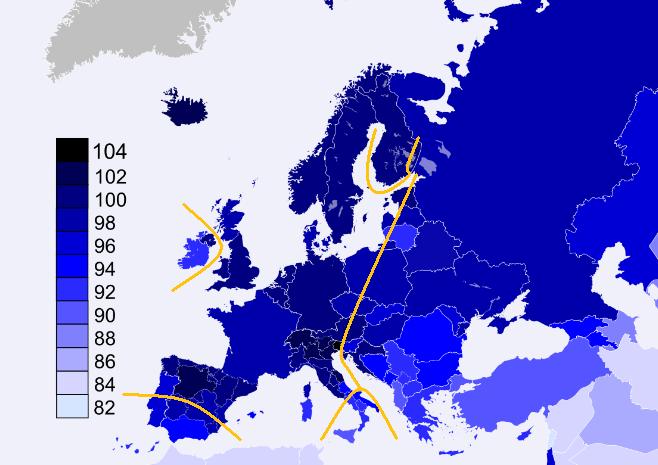Angela
Elite member
- Messages
- 21,823
- Reaction score
- 12,329
- Points
- 113
- Ethnic group
- Italian
[h=1]Older fathers' children have lower evolutionary fitness across four centuries and in four populations[/h]See:
http://biorxiv.org/content/early/2016/03/08/042788?rss=1%22&utm_source=dlvr.it&utm_medium=twitter
More proof for something that I think we already knew, I think:
"
[h=2]Abstract[/h]"Higher paternal age at offspring conception increases de novo genetic mutations (Kong et al., 2012). Based on evolutionary genetic theory we predicted that the offspring of older fathers would be less likely to survive and reproduce, i.e. have lower fitness. In a sibling control study, we find clear support for negative paternal age effects on offspring survival, mating and reproductive success across four large populations with an aggregate N > 1.3 million in main analyses. Compared to a sibling born when the father was 10 years younger, individuals had 4-13% fewer surviving children in the four populations. Three populations were pre-industrial (1670-1850) Western populations and showed a pattern of paternal age effects across the offspring's lifespan. In 20th-century Sweden, we found no negative paternal age effects on child survival or marriage odds. Effects survived tests for competing explanations, including maternal age and parental loss. To the extent that we succeeded in isolating a mutation-driven effect of paternal age, our results can be understood to show that de novo mutations reduce offspring fitness across populations and time. We can use this understanding to predict the effect of increasingly delayed reproduction on offspring genetic load, mortality and fertility."
It seems the effects aren't really significant modern society.
I wonder if that's as true with maternal age.
http://biorxiv.org/content/early/2016/03/08/042788?rss=1%22&utm_source=dlvr.it&utm_medium=twitter
More proof for something that I think we already knew, I think:
"
[h=2]Abstract[/h]"Higher paternal age at offspring conception increases de novo genetic mutations (Kong et al., 2012). Based on evolutionary genetic theory we predicted that the offspring of older fathers would be less likely to survive and reproduce, i.e. have lower fitness. In a sibling control study, we find clear support for negative paternal age effects on offspring survival, mating and reproductive success across four large populations with an aggregate N > 1.3 million in main analyses. Compared to a sibling born when the father was 10 years younger, individuals had 4-13% fewer surviving children in the four populations. Three populations were pre-industrial (1670-1850) Western populations and showed a pattern of paternal age effects across the offspring's lifespan. In 20th-century Sweden, we found no negative paternal age effects on child survival or marriage odds. Effects survived tests for competing explanations, including maternal age and parental loss. To the extent that we succeeded in isolating a mutation-driven effect of paternal age, our results can be understood to show that de novo mutations reduce offspring fitness across populations and time. We can use this understanding to predict the effect of increasingly delayed reproduction on offspring genetic load, mortality and fertility."
It seems the effects aren't really significant modern society.
I wonder if that's as true with maternal age.














